Was everything better in the good old days?
Christopher Hector asks the question
Watching the Olympic Games in Tokyo from afar and in lock down, I was coming to the depressing conclusion that yes, I was going to have to get used to short, and up in front necks. It was reinforced looking at the footage of the top young horses at the World Young Dressage Horse Championships in Verden. There were some wonderful horses, extraordinary movers but I couldn’t help thinking that they would be oh so much nicer if they could just move their nose out a fraction and open the gullet – like this – well maybe not quite so open but dear me a little too open is so much nicer than hauled in and tight:
Piaf and Liselot Linsenhof win gold at the1972 Olympics
Although all is not gloom and doom, there are riders who show their horses in a relaxed natural – and SOFT – way, like Charlotte Dujardin and her wonderful Valegro…
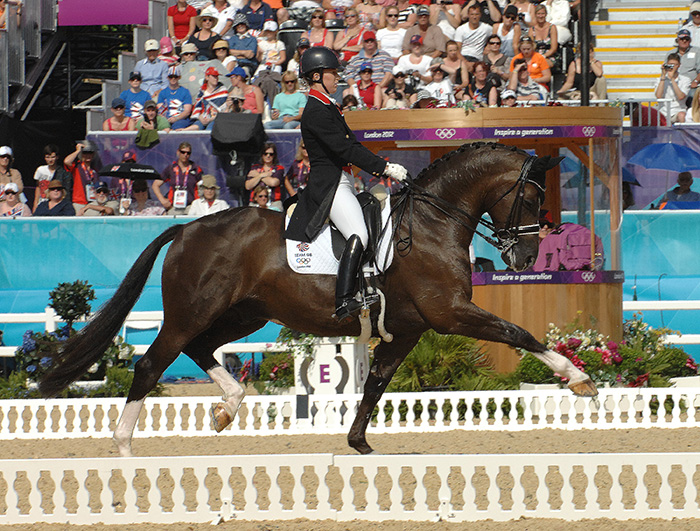
The frame is open, the flow through the neck, a lot more relaxed than say this…
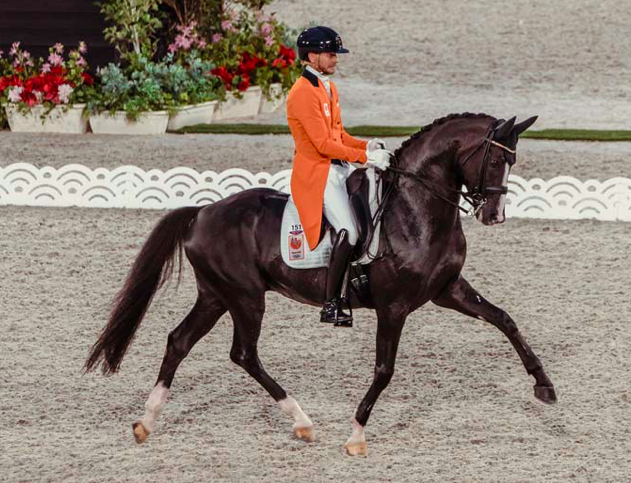
Edward Gal and Total US at Tokyo – the stallion scored 78.649 in the Grand Prix….
(photo – FEI/Christoph Taniere)
I started thinking about the riders of modern times who showed their horses in an open frame, and the ones that come to mind immediately are those of Carl Hester and Charlotte Dujardin, and it is interesting that Carl does not believe that everything was wonderful in the past and has gone to the dogs now:
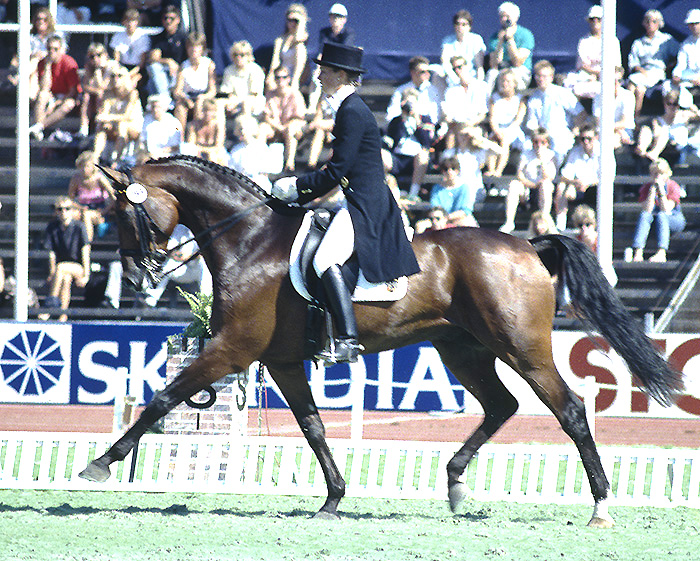
Rembrandt and Nicole…
Carl remembers: “I started in about 1990, Rembrandt, Corlandus, Gigolo, Goldstern, all these horses and their riders that were winning medals at the time, they were round and on the bit horses. That’s what my first memories of dressage are…
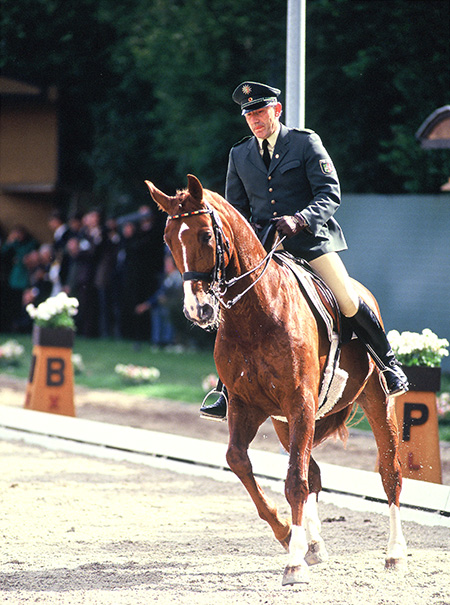
Goldstern and Klaus Balkenhol
What I take from the past that I really like, is the lightness, the harmony, there’s a lot of good there. I just don’t go with the ‘everything that’s modern is wrong’ view.”
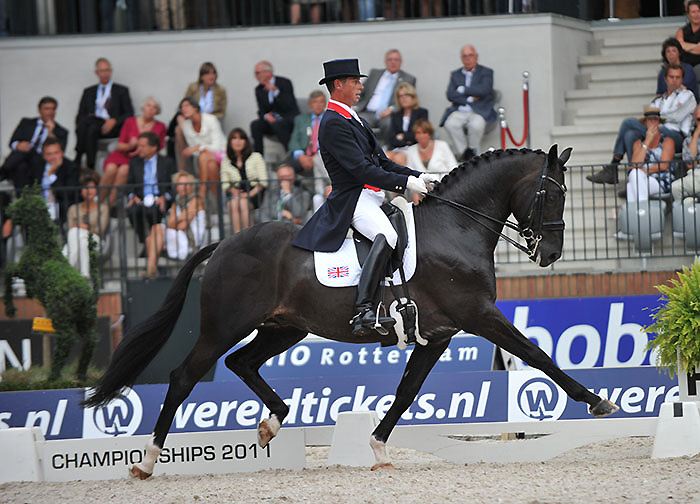
Carl and Uthopia – when they won at the Euros and started the swing to softer dressage
Carl certainly puts the principle to work with his own horses:
“If you can create what we try to create, without heavy hands, without hanging onto the rein, if you can do it with self-carriage, then it looks beautiful. It’s this word, expression, which is a dangerous word because once you put expression into it, like heightened suspension and things like that, then if you have got the wrong rider, or a rider who doesn’t ride with an independent seat, then they use their hands and that’s when you get that horrible looking, jerky dressage. It is something we really work on, to be able to create it, without going over-board.”
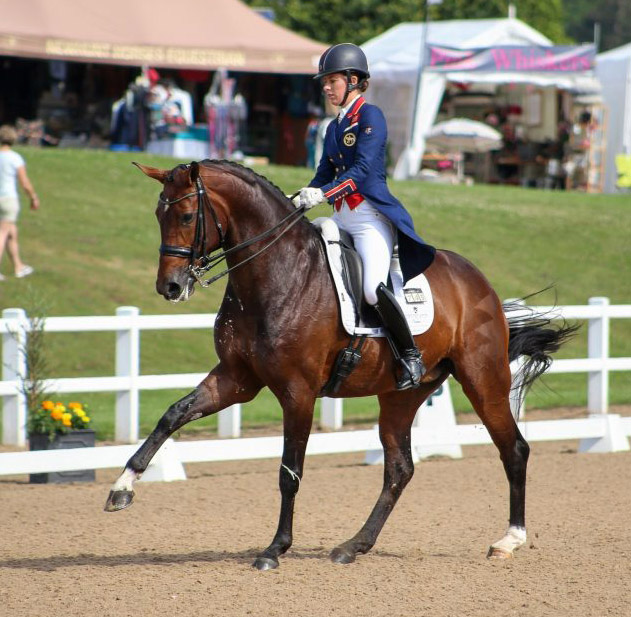
Charlotte and Freestyle
I think that it is interesting that the American riders under the guidance of Robert Dover and Debbie McDonald seem to have taken the best of the German Classical Principles and added their own brand of horsemanship to produce a very nice, soft and correct, synthesis.
Adrienne Lyle and Salvino
The Danish team also presents a very attractive picture…
Cathrine Dufour and Cassidy
Which is not surprising, since their team coach, Princess Nathalie rode in a lovely outline…
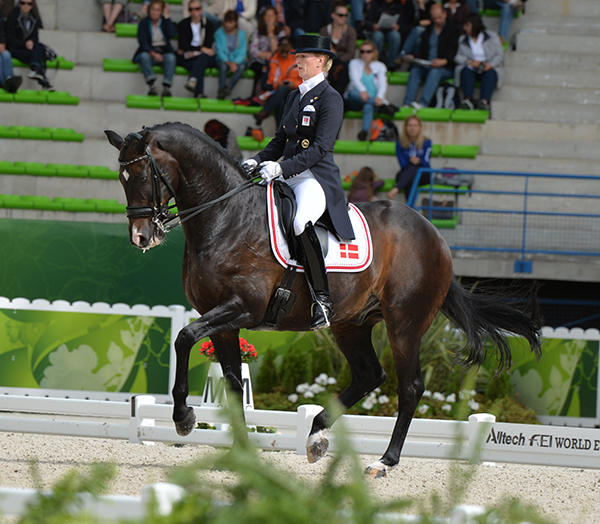
Princess Nathalie and Digby
Nathalie also stresses the importance of lengthening the neck in her teaching. I remember her talking about one pupil with something of a death grip:
“Yes, I am sure the horse is strong, and he just wants to canter long, and the rider has found a way where she can just hold onto him, but she is actually riding back, and back, and back, and through that, losing more and more canter rhythm. She has to find the way where she can give on the rein, and the horse has to realise that he has to carry himself. He can’t use her hand as his fifth leg, he must not balance on her hand. She has to really make a half halt, let go and then the horse must realise, oh there is a hind leg that I have to stay on. I would try and get him entirely, completely off my hand, even if the head goes too far up, I would really make sure that he is off my hand, and make him realise that he has two hind legs that he has to stay on.”
Nathalie had two great teachers, Klaus Balkenhol and Kyra Kyrklund – who can forget the wonderful outline of Kyra’s Matador…
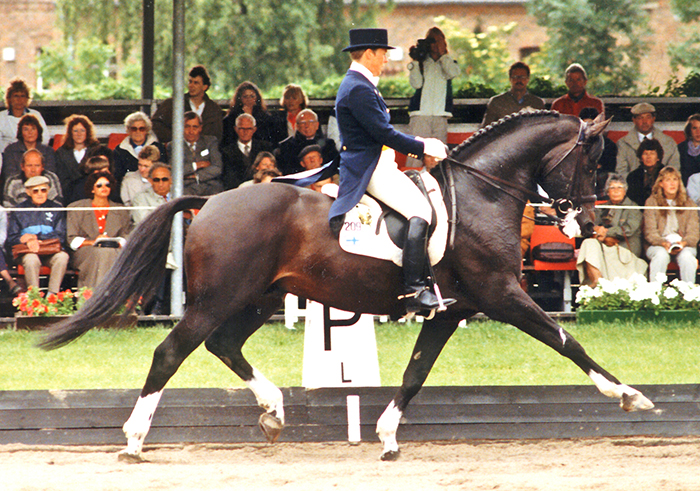
Kyra and Matador
Or the length, and correctness of Goldstern under Klaus…
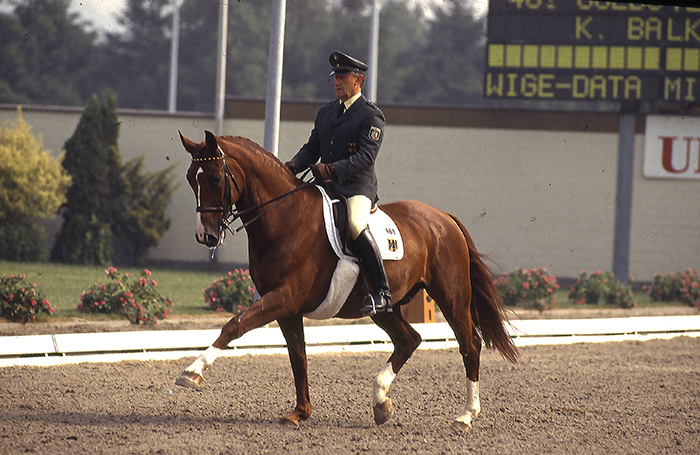
Klaus and Goldstern
Now it might be said that the riders on Lusitanos have something of an advantage, it is very hard to wrestle their necks into the short, tight and up, outline, but it is not for nothing that for many, one of the real stars of the Tokyo Games, was Rodrigo Torres…
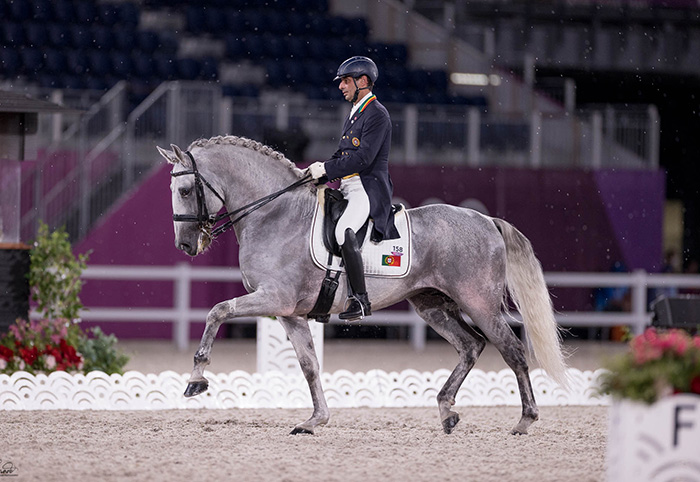
Rodrigo Torres and Fogoso (Lily Forado photo)
To go back to my opening question – yes, I suppose we have to get used to high and tight in front because we are never going to have judges with the courage, or eye, to eliminate it, but it doesn’t mean we have to approve of it… or that we can’t celebrate riders who do ride with harmony and softness, because there are some.
Hubertus Schmidt has ridden at the top for two decades now, and he is a keen observer of the scene and where dressage is headed:
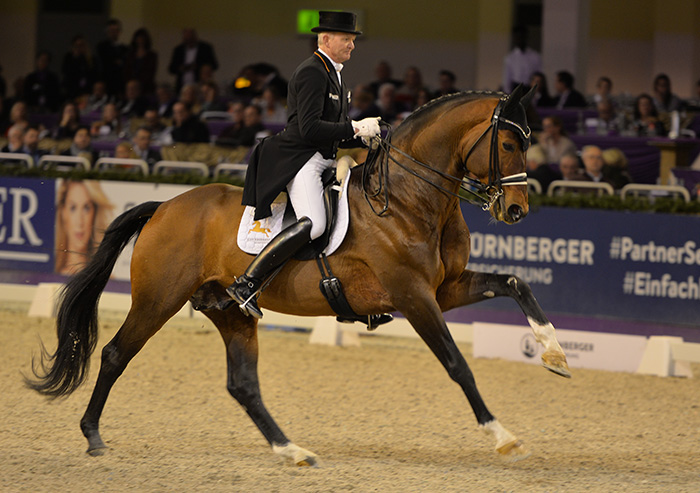
Hubertus and his latest star, Escolar
“We had this bad time where people worked in the wrong direction and the pity was that some people were successful with it, so more people worked in the wrong way. The good thing is that it has changed, it started with Valegro, with Damon Hill, now we have so many top top horses which are trained in the very correct and classical way.”
Damon Hill and Helen Langehanenberg
“Okay everywhere you can see sometimes bad pictures, sometimes you have people who are not good enough, but I know when I go to the local competitions, M and S classes, St Georg, on this level the riding is quite good and gets better and better. In Germany, England, everywhere, the riding is better, even the Dutch they start to change a little, I have the feeling that they feel they have gone the wrong way. Denmark, Sweden, there are a lot of very good Swedish riders, it has really changed, every year the horses get better and we have more and more top top riders. Twenty years ago, we had a handful, now we have twenty, thirty riders at the absolute top level.”
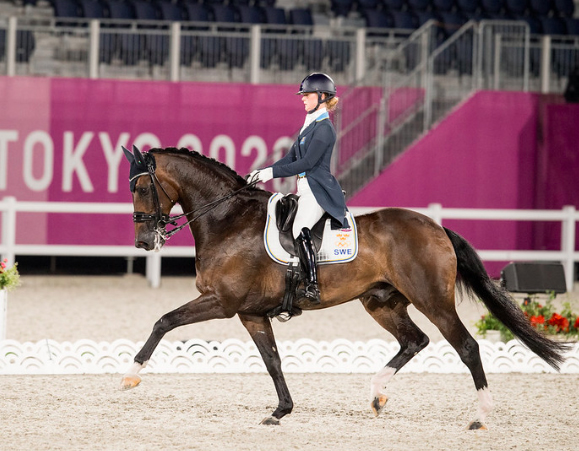
Classical, correct riding from Sweden – Juliette Ramel and Buriel KH
(FEI photo / Shannon Brinkman)
So let’s enjoy the good ones…
Breeding your dressage star in Australia this season? Go to www.ihb.com.au
And see the amazing range to top European stallions – like Total Hope – a winner himself:
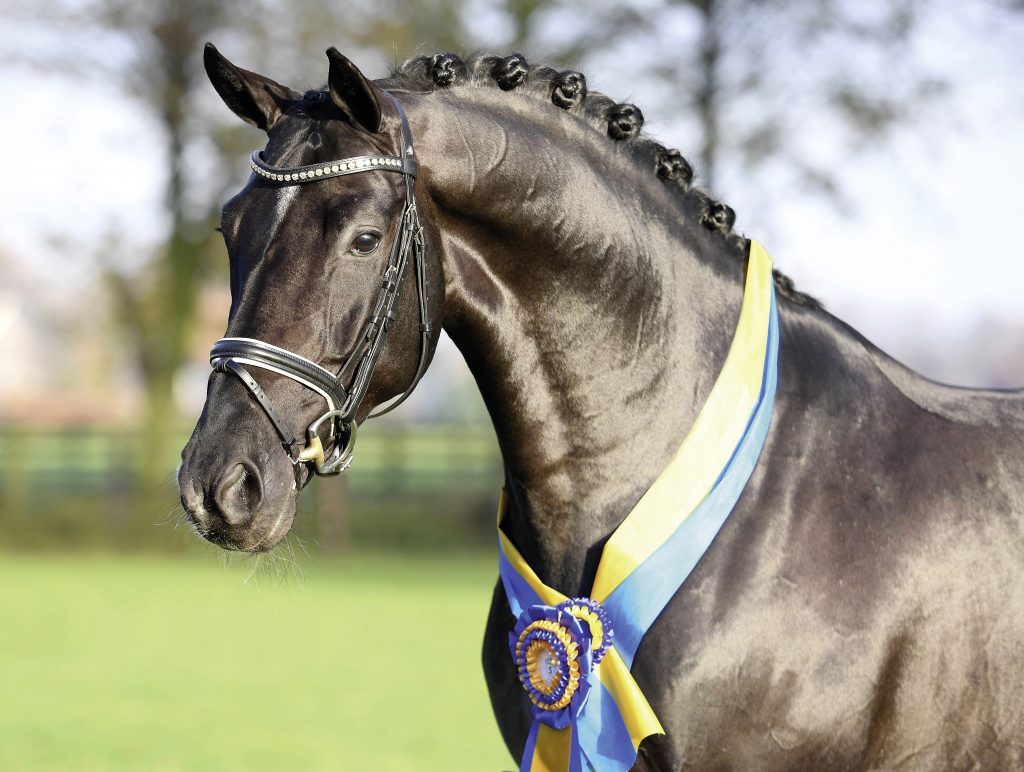


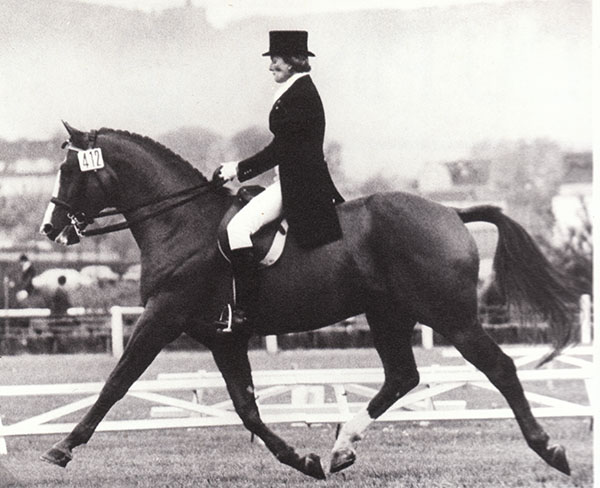
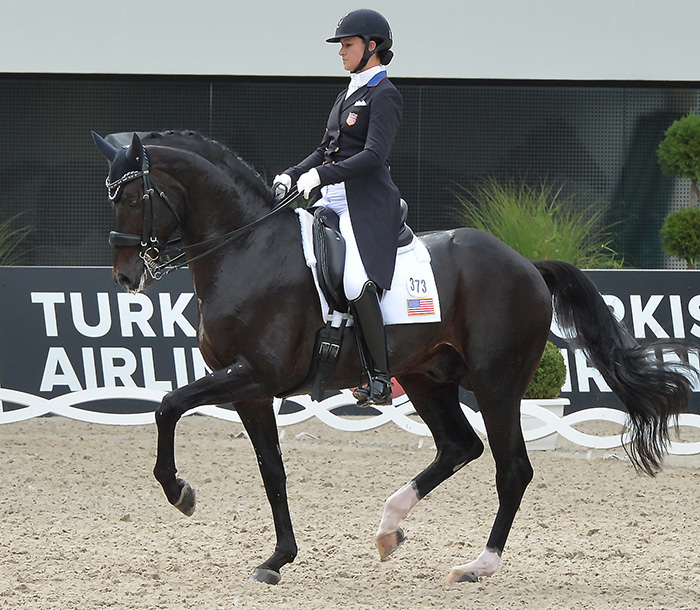
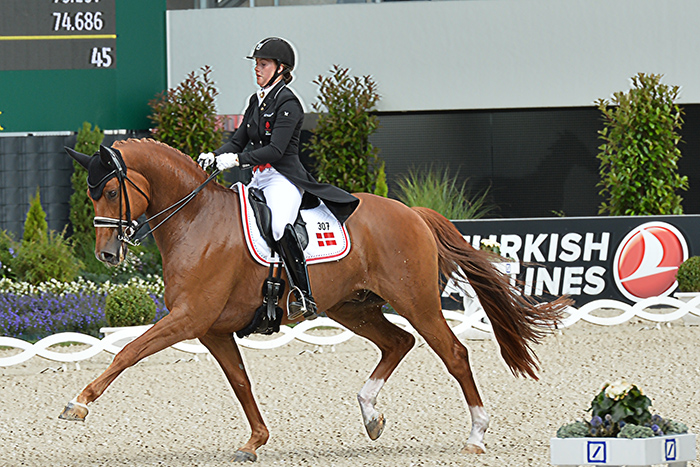
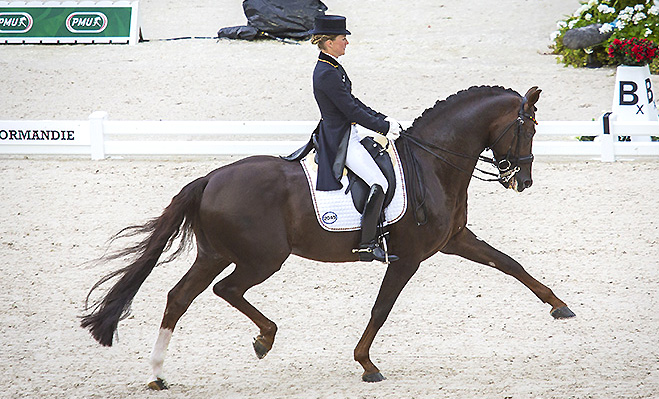
Always sits solely with the judging sector – marking, training, selection, promotion. National and International federations are not fulfilling their responsibility. Full. Stop.
Hallo Christopher. Interesting considerations. But, in my eyes, it is not only about the neck- but the hole body, the beat, the engaged hindlegs, the poll highest or not, the closed mouth and and and. All this depends at how they do the riding in the everyday. If you never engage the base og the neck with a long shape, then you will never have a horse with the poll highest, is my experience. Most riders are training i hyperflexion-
https://www.facebook.com/groups/dressageschoolingdiscussions
This is a group dedicated to correct dressage through strict adherence to the very clearly stipulated FEI rules of dressage.
The problem is that judges are rewarding bad incorrect riding and thus everyone must follow in order to win or place.
Think of this:
prerequisite for all the movements is that the horse shall appear to be doing of its own accord, which would require poll highest point at all times and head (not forehead) in front of the vertical and the rider using INVISIBLE aids.
There is a biomechanical reasoning behind those descriptions……compressing the throatlatch to any degree incurs tension into the muscle structure, blood flow, nerve signals of the upper neck region and more importantly impedes the airway.